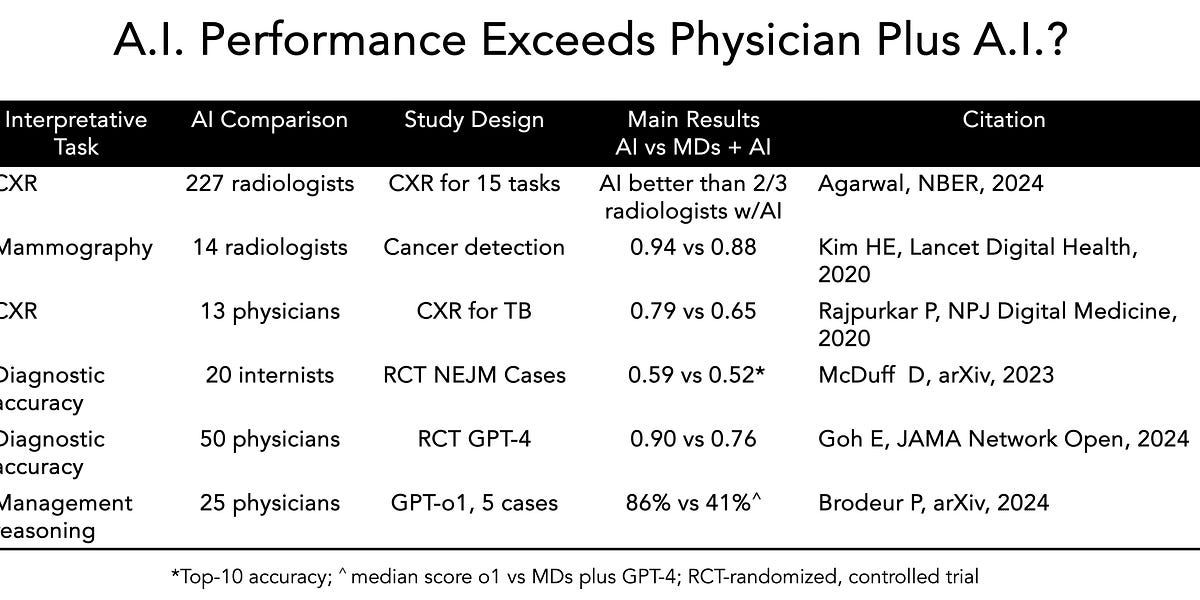- Arvind's Newsletter
- Posts
- Arvind's Newsletter
Arvind's Newsletter
Issue No. #1061
1.India’s manufacturing growth hits six-month high in January: HSBC PMI survey
India’s manufacturing growth, which moderated in December, rose to a six-month high in January on the back of rising new export orders, a private survey released on Monday said.
The HSBC India Manufacturing Purchasing Managers Index (PMI), compiled by S&P Global, came in at 57.7 in January, up from 56.4 in December and 56.5 in November. It was 57.5 in October and 56.5 in September. A PMI reading above 50 indicates an expansion and below 50 a contraction.
2.India set for blockbuster IPO year despite slowing economic growth: Financial Times
India is gearing up for a torrent of mega listings this year that could propel the value of initial public offerings beyond 2024’s blockbuster performance, even as the country’s economy weakens and currency comes under increasing pressure.
At least seven companies are preparing to raise at least $1bn each this year, according to investment bankers working on the listings. They include domestic names such as online brokerage Groww, fintech company Pine Labs, which has PayPal as an investor, and SoftBank-backed eyewear brand Lenskart. South Korea’s LG is also expected to list its Indian arm.
This year’s crop compares with last year’s three $1bn-plus offerings, which included Hyundai’s listing of its local business, as well as the debut of takeaway and grocery delivery company Swiggy. Last year, India topped Asian IPO rankings and came in only below the US globally.
The total equity fundraising through public flotations could surpass $23bn in 2025, according to Indian brokerage and asset management group Motilal Oswal, up from $19.6bn raised in 336 IPOs last year.
3.India turns to private sector for rocket launches: Financial Times
India aims to mirror the success of Nasa and Elon Musk’s SpaceX by turning to the private sector to build rockets and satellites, according to the head of a government space agency.
Prime Minister Narendra Modi’s government plans to use private start-ups to manufacture launch vehicles formerly produced by ISRO, India’s national space agency, said Pawan Goenka, chair of IN-SPACe, which is overseeing the private sector’s push into space.
The country also aims to become a “global leader” in the export of small satellites. “The rocket being used today for missions like Chandrayaan will now be built by the private sector,” Goenka told the Financial Times, referring to India’s lunar exploration programme. “That could amount to a business opportunity of about $4bn-$5bn.”
The government’s push is motivated in part by a need to match what India sees as a growing strategic threat from China, including its defence capabilities in space. India in recent years has boosted efforts to become an international power in space exploration.
In July 2023, it became only the fourth country to land a craft on the Moon, and the first to reach its South Pole, with the Chandrayaan-3 mission. Two private Indian start-ups, Skyroot Aerospace and Agnikul Cosmos, have successfully completed suborbital tests of launch vehicles.
4.The looming global trade war: Bloomberg
Financial markets are in turmoil after US President Donald Trump shocked nearly everyone by unleashing aggressive and immediate tariffs on imports from Canada, Mexico and China and threatening fresh levies on the European Union. A gauge of Asian stocks fell the most in nearly six months, the peso depreciated to its lowest level against the dollar in almost three years, while the Canadian dollar sank to its weakest since 2003. Crypto assets plunged, with Ether, the second-largest digital asset by market value, falling as much as 27%.
The countries are the three largest trading partners for the US, accounting for more than 40% of imports last year. Canada, the largest export market for 36 US states, said it would apply a 25% tariff on more than $100B in goods in the coming weeks. Mexico said it would apply retaliatory tariffs but did not specify details.
The biggest losers in the region include Japanese carmakers that make vehicles for the US market in Mexico, Chinese online retailers and chip exporters. Oil prices jumped on the risk of market disruptions and metals tumbled because of the threat to global growth.
Goldman Sachs Group strategists said there’s a risk of a 5% slump in US stocks because of the hit to corporate earnings. RBC Capital Markets put the range at 5% to 10%.
Energy markets also were rattled by tariffs that threaten to increase costs for American consumers and disrupt supplies. Gasoline futures soared as much as 6.2% in New York. West Texas Intermediate jumped about 2%.
A major question remains: Will Trump leave his tariffs in place for long?
Some of Trump’s allies have suggested that he will use the threat of tariffs as a negotiating tactic. If Trump just wants Canada and Mexico to do more on illegal immigration and drug trafficking, he may have imposed these tariffs only to show that he’s serious about national security. Once the three countries negotiate, Trump may rescind the tariffs.
Read below what Nobel Prize winning Economist Paul Krugman and the The Economist magazine have to say on the tariff war unleashed by Trump.
5.When Doctors With A.I. Are Outperformed by A.I. Alone: Blog post by Eric Topal and Pranav Rajpurkar
“In our op-ed in today's NY Times explores an unexpected finding. A series of recent studies compared the performance of doctors with A.I. versus A.I. alone, spanning medical scans, diagnostic accuracy, and management reasoning. Surprisingly, in many cases, A.I. systems working independently performed better than when combined with physician input. This pattern emerged consistently across different medical tasks, from chest X-ray and mammography interpretation to clinical decision-making. In some of the studies, summarised in the Table in our blog post below, the gap for performance favoring A.I. alone was large.
All along most of us in the medical community had anticipated the combination would achieve superior results. What explains these counterintuitive findings? They could simply reflect that physicians haven't been well grounded in using A.I., or have "automation neglect" (bias against A.I.), or that the studies are relatively small and contrived—attempts at simulating medical practice but a far cry from the complex, messy world of how we diagnose and care for patients. But there may be a more fundamental consideration: we may need to rethink how we divide responsibilities between human physicians and A.I. systems to achieve the goal of synergy (not just additivity, i.e. 1+1 = 5).
Rather than assuming that combining both approaches always yields better results, we should carefully consider which tasks are better suited for A.I., which for humans, and which truly benefit from collaboration. The path forward isn't about replacing physicians with A.I., but rather about finding the optimal partnership model. This might mean allowing A.I. to handle initial screening while having physicians focus on complex cases where contextual understanding is crucial.
As we navigate this unexpected territory, one thing becomes clear: the future of medicine won't be shaped by a simple choice between human or artificial intelligence, but by our ability to understand their respective strengths and limitations, and to orchestrate their collaboration in ways that truly benefit patient care.
The challenge ahead isn't just technological – it's about reimagining the role of both physician and A.I. in healthcare delivery.
6.8 lessons on lifelong learning from an astrophysicist
In order to become an astrophysicist, you have to learn not just math, physics, and astronomy, but also a profound series of lessons about thinking, problem solving, and learning itself.
Those lessons have applications that extend far beyond scientific or academic pursuits, and can help learners of all ages and from all walks of life.
These eight profound lessons range from ignoring noise to knowing when to listen to someone with more expertise than you, and they can help everyone economise their efforts to achieve maximal results.
7.NASA announced that the first Indian astronaut will travel to the International Space Station later this year, further cementing the collaboration between the US and India’s respective space agencies.
Astronaut Shubhanshu Shukla will join three other crew members for a two-week stay as part of a mission by private company Axiom. NASA is increasingly looking to commercial firms like Axiom and SpaceX to get astronauts to and from orbit.
8.The End of Search, The Beginning of Research: Ethan Mollick, Prof of Wharton Business School in his blogpost.
“A hint to the future arrived quietly over the weekend. For a long time, I've been discussing two parallel revolutions in AI: the rise of autonomous agents and the emergence of powerful Reasoners since OpenAI's o1 was launched. These two threads have finally converged into something really impressive - AI systems that can conduct research with the depth and nuance of human experts, but at machine speed. OpenAI's Deep Research demonstrates this convergence and gives us a sense of what the future might be. But to understand why this matters, we need to start with the building blocks: Reasoners and agents.
OpenAI’s Deep Research (not to be confused with Google’s Deep Research, more on that soon) is essentially a narrow research agent, built on OpenAI’s still unreleased o3 Reasoner, and with access to special tools and capabilities. It is one of the more impressive AI applications I have seen recently/” Read on
9.Music's Big Night
The 67th annual Grammy Awards were held last night, with Beyoncé taking home the show's top prize of album of the year for "Cowboy Carter." The win is Beyoncé's first in the category after she was previously nominated four times. She also nabbed an award for best country album, becoming the first Black female artist to win in the category.
Kendrick Lamar dominated the Grammys and won five awards, including record of the year and song of the year for "Not Like Us"—a track aimed at fellow rapper Drake. Other notable winners included Doechii, who became the third woman in history to win best rap album ("Alligator Bites Never Heal"); Sabrina Carpenter, who won best pop vocal album ("Short n’ Sweet"); and Chappell Roan, who won best new artist. See the full list of winners below.
The awards were hosted by former "Daily Show" comedian Trevor Noah for the fifth year in a row.











